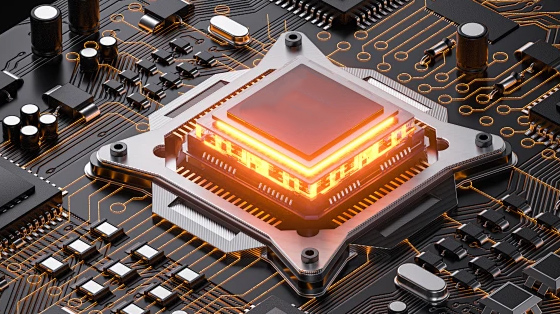Coaxial Connectors: Prep for Landing
3/9/2023 11:11:30 AM
"Semiconductors: The Silent Champions of Modern Agriculture"
In the quiet expanses of farmland, away from the bustling tech hubs and urban centers, a silent revolution is taking place-one driven not by traditional farming methods but by the unseen hand of technology. Among the many tools modern agriculture relies upon, semiconductors stand out as the invisible heroes, transforming age-old practices into data-driven, precision-based operations. This shift promises not only to boost yields and efficiency but also to address pressing environmental concerns.
Precision Farming: Where Data Meets Dirt

Robotic Harvesters and Autonomous Tractors
Imagine vineyards tended by robotic harvesters that navigate autonomously, picking grapes with surgical precision, or fields plowed by tractors devoid of drivers. This isn't fiction; it's today's reality, made possible by semiconductors. Microcontrollers and sensors work in tandem to guide machinery, while AI algorithms process visual inputs to distinguish ripe crops from weeds-a task previously reserved solely for human eyes.
Weather Prediction and Disaster Mitigation
Semiconductors also play a crucial role in meteorology, enhancing weather prediction capabilities and enabling farmers to plan accordingly. Weather stations, enhanced with advanced sensors, collect atmospheric data which is then processed by high-performance computers. Accurate forecasts help farmers anticipate adverse conditions, take protective measures, and optimize planting cycles, contributing to food security and reducing losses due to unpredictable climates.
Irrigation Optimization: Saving Water, Nurturing Crops
Water scarcity poses a significant threat to agricultural productivity. Smart irrigation systems, powered by semiconductors, offer a solution. Moisture sensors detect exact water requirements in real-time, triggering sprinklers or drip irrigation systems precisely when needed. This intelligent allocation conserves precious resources while maintaining optimal growing conditions.
Monitoring Livestock Health Remotely
Livestock management receives a high-tech upgrade through the integration of wearable devices and implantable tags containing semiconductor-based sensors. These monitor animal health parameters such as body temperature, activity levels, and feeding habits. Early warning systems alert veterinarians to potential illnesses, allowing for prompt intervention and treatment, thus improving animal welfare and farm profitability.
Food Traceability and Quality Control
From farm to fork, tracking food quality and origin is critical in ensuring consumer safety and satisfaction. Semiconductors underpin RFID (Radio-Frequency Identification) tags attached to food products. These tags store information about the product's journey, accessible via scanners. Consumers can trace their food's history, verifying freshness and compliance with safety standards, fostering trust in the food industry.
Education and Training: Preparing the Next Generation
As technology becomes increasingly integrated into agricultural practices, educating farmers and the youth about the latest developments is essential. Programs incorporating lessons on the use of semiconductors in farming aim to bridge the digital divide, ensuring that rural communities aren't left behind. Workshops teach practical skills like sensor installation, data analysis, and equipment maintenance.
Sustainability and Environmental Stewardship
Semiconductor technology promotes sustainable farming practices by reducing chemical use, optimizing resource consumption, and minimizing waste. This not only enhances biodiversity and soil health but also aligns with broader environmental protection goals. By leveraging the power of semiconductors, agriculture moves closer to achieving a harmonious balance between productivity and ecological preservation.
Concluding Remarks: A Brighter Agricultural Horizon
The marriage of semiconductors and agriculture represents a paradigm shift, promising a future where farming is not just about survival but about thriving sustainably. As the global population grows, and climate conditions become more volatile, the role of technology in ensuring food security becomes paramount. Semiconductors, once considered merely components in consumer gadgets, are now indispensable in the grand scheme of agricultural innovation, serving as the foundation for smarter, greener, and more resilient food production systems.
This narrative explores the lesser-known yet profoundly impactful role of semiconductors in the realm of agriculture. It paints a vivid picture of how these tiny electronic marvels are reshaping farming landscapes, from the granular details of crop management to the overarching objectives of sustainability. By spotlighting the intersection of semiconductors and agriculture, the piece invites readers to appreciate the breadth of technology's influence and the potential for continued innovation in sectors traditionally perceived as traditional or static.


 2024.12.25
2024.12.25






